|
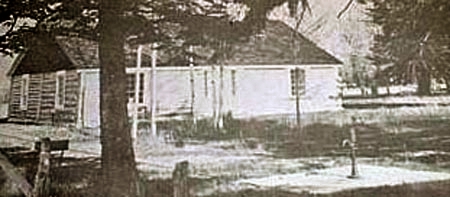
Commanding Officer's Quarters, Fort Bridger approx. 1860's
The original commanding officers quarters was a one-story log house.
Other officers were also remained relegated to log cabins.The logs were brought from the Uinta Mountains abut 40 miles to the
south. Nevertheless, life could be comfortable although it must have seemed as
if there was a revolving door on the Commanding Officer's office. During the period 1858 to 1861 when the regular army
was replaced by volunteers, there were five commanding officers, Wm. Hoffman, E. R. Canby, R. C. Gatlin, Alfred Cuming and Franklin Gardner.
The short terms, however, were brought about by the war brewing in the East. Canby was posted to New Mexico to defend it from
from his old comrade-in-arms, Henry Hopkins Sibley, who was delegated the task by President Davis of securing
New Mexico for the Confederate States. Gatlin, Cummings, and Gardner all left to join Confederate forces. Gardner, interestingly,
was born in New York.
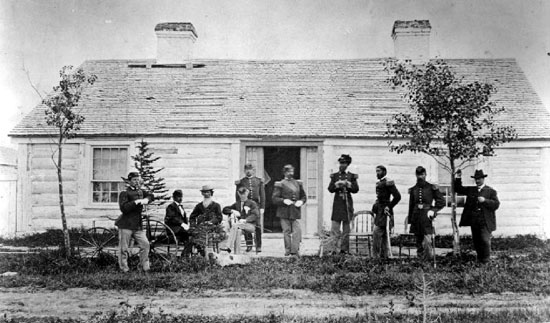
Fort Bridger approx. 1870.
The civilian with the white beard is the post sutler, William A. Carter, discussed on a subsequent page.
With the war, the fort was turned over to volunteers until 1866 when the regular army again took over control. During the
war, the condition at the fort declined. Thus,in 1866 Gen. Orville E. Babcock passed through the facility and noted its deplorable
state from neglect during the war, "I passed this post and found it in a shamful condition--grounds not policed, buildings out of order,
flooring burned up, bridges burned, shade trees broken down."
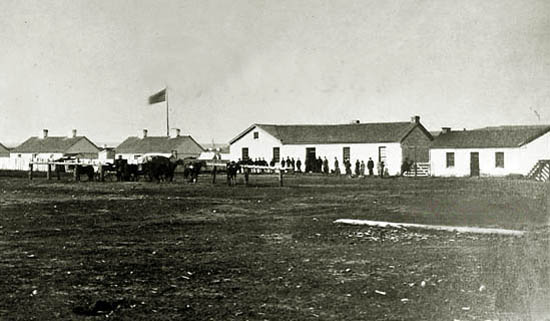
Fort Bridger approx. 1876.
But, gradually the fort took gave up its appearance as a temporary log fort and barracks and other buildings
were constructed according to standardized army plans.
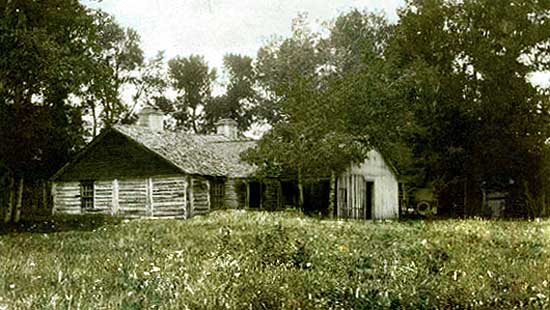
Remains of officers Quarters, 1933.
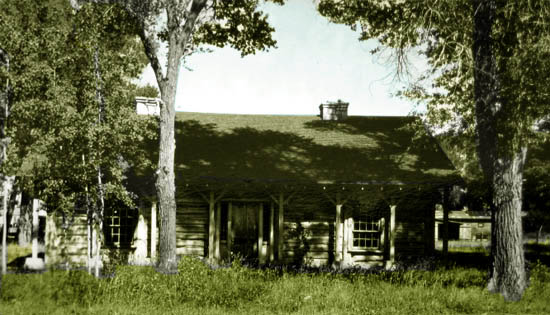
Remains of officers Quarters, 1939.
But several months later when Andrew Burt assumed command, Mrs.
Burt found the posting to be most agreeable. The post trader's ox trains brought from St. Louis some of the finer items of life including a
piano. The post had the first school in the Territory constructed by the post trader.
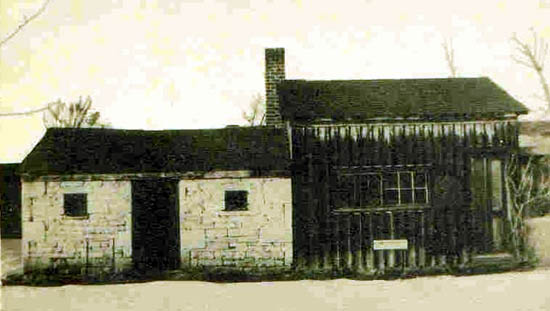
School House at Fort Bridger, undated. milk house to left.
The school at Fort Bridger was established in 1860 by the fort sutler, Judge William A. Carter, with its
first teacher being Fannie Foot. Prior to the formation of schools, children would have to attend boarding schools elsewhere. Jim Bridger,
as an example, sent his daughter to a missionary school in Oregon. Unfortunately,
the mission was attacked by Indians, the missionaries killed, and Bridger's daughter
kidnapped by the Indians.
In 1878, the Army perceiving with the construction of the Union Pacific Railroad and the end of the Indian Wars, the
army discontinued garrisoning the fort. In 1880,however, the Utes in Colorado became restless and the
for war recommissioned. This required an upgrade to the facilities.
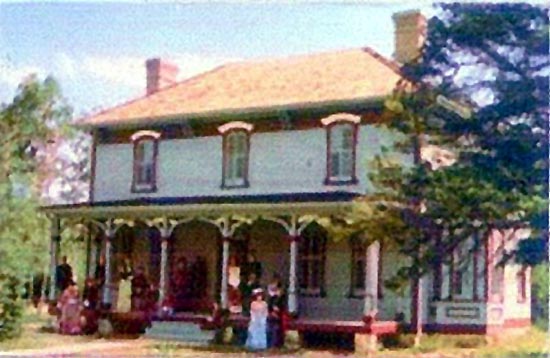
Commanding Officer's Quarters, 1880's
The quarters were constructed in 1884 supplanting the earlier commanding officers quarters which had been
constructed in 1858.
The post was again abandoned by the army in 1890. A small contingent of men were left behind until the fixtures of the
fort could be auctioned off. The last aspect of the military was removed in May 1891, when those interred in the military cemetery were reoved to
Fort McPherson, Nebraska, for re-interrment. One grave was left behind, that of the only survivor of the
Thornburgh Massacre. The properties were auctioned off in 1895.
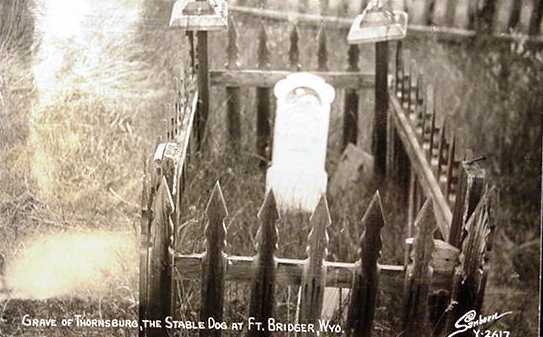
Thornburgh, Died Sept. 27, 1888.
"Man never had a better, truer, a braver friend. Sleep on, Old fellow, We meet across the range."
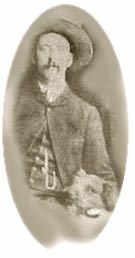 Thornburgh with friend.
Thornburgh with friend.
Thornburgh (1879-1888) was the sole survivor of a wagon train that was
burned by Indians as a part of the Thornburgh Massacre on September 29, 1879. As a small puppy, he was
found whimpering next to the body of his mother who was killed in the battle. He was
named after Major T. T. Thornburgh who was also killed in the massacre. He was first taken to
Fort Fred Steele and later brought to Fort Bridger. Thornburgh is credited with
preventing a burglary of the commissary,saving a young boy from drowning, and alerting sentries to marauding Indians.
He had an intense dislike of Indians and civilians. Thornburgh never overcame his aversion to Inidans. However, in his later years
the dog overcame his dislike of civilians to become
the faithful companion of teamster and packer "Buck" Buchanan, a civilian employee of the quartermaster general at a salary of
$420.00 a year.
Thornburgh learned to assist Buchanan in separating
the army mules from those of used Buchanan. The mules became accustomed to Thornburgh. However, One day several "shavetail" army mules were placed in the
corral who were unfamiliar with the dog. A shavetail mule is one which has not yet been broken, so-called because the Army had the practice of shaving or cutting
the tails on mules which are unreliable so that the drivers could tell them from ones which have been trained. The name began to be
applied to newly minted second lieutentants. Thornburgh was killed when he was kicked by a shavetail mule. Buchanan with the quartermaster general's corps moved from
army post to army post in the west. The last record of Buchanan found was in a small item on page
7 of the Salt Lake Herald, August 4, 1897, in a column relating to Fort Douglas:
Teamster Buchanan has been relieved from duty in the post stables and Sergeant Rucker (retired) detailed in his stead.
Buchanan is a veteran teamster and packer and has served many years with the army. He served as such for several
years at old Fort Bridger. Douglas and several other poets. He has been on several Indian campaigns, the last one
being at Wounded Knee, S. D., in 1890. He has always been a faithful, hard working man and is known by a very large number of
men in this section of the country, who will be sorry to learn of his discharge.
Based on death records, it is likely that Buchanan died in the county infirmary in Salt Lake City in 1901, age 52. His occupation was listed as
"hackman." Famed world traveler and author Albert Cooper Allen (1875-1972) believed that Buchanan lies in an
unmarked grave in Salt Lake City.
Next page: Ft. Bridger continued, The Mormon Wall and Commissary Building.
|